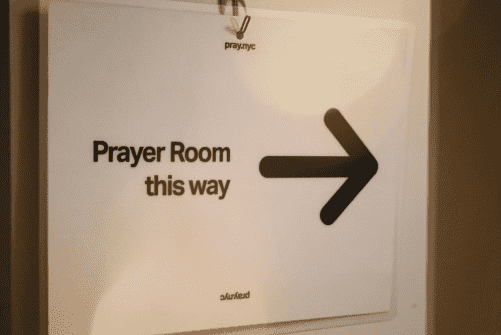
Blog
- Employer advice
Home
Resources
Employer advice

Kiljon Shukullari, HR Advisory Manager
(Last updated )

Kiljon Shukullari, HR Advisory Manager
(Last updated )
The modern workforce is made up of workers from diverse generational backgrounds. Many businesses are backed by employees from across four generations: Baby Boomers, Generation X, Generation Y (Millennials), and Generation Z.
Although each generation can bring its unique perspective, value, and skills to an organization, their differences can also cause potential friction, disagreements, and conflicts. By understanding how to manage different generations in the workplace, employers can retain valuable employees, attract top talent, and benefit from the diversity of a multigenerational workforce.
There are four main generations of workers dominating today’s workforce: Baby Boomers, Gen X, Gen Y (Millennials), and Gen Z. In some work environments, you may also encounter the Traditionalist Generation, or the Silent Generation, which consists of those born between 1928 and 1945. Though most Traditionalists are in retirement, some remain in the workforce and are usually in part-time, seasonal, or casual work opportunities.
More commonly, however, you’ll find these four generations in the workplace:
Baby Boomers entered the workforce when digital technologies were less common in the workplace. They tend to prefer face-to-face communication or written notes to emails, text, or virtual meetings. These experienced and dedicated workers have a strong work ethic and value job security, stability, and career advancement.
With their decades of experience in the workforce, Baby Boomers have a lot to bring to the table. You can motivate them by recognizing their contributions, acknowledging their experience, creating an age-inclusive company culture, and encouraging them to mentor younger employees.
Keep older Baby Boomers engaged by offering them reduced schedules, flexible work, or providing health-related accommodations. Since many Baby Boomers are approaching retirement, you can retain valuable employees longer by giving them healthcare, pension, and retirement benefits.
Here are some work options and benefits you can offer Baby Boomer employees to retain them:
Gen X is currently the second largest generation in the workforce behind the Millennials. They are sometimes known as the “latchkey generation” since Gen X grew up during a time when the traditional family structure shifted toward dual income households, with both parents employed in full-time or part-time positions. As a result, Gen Xers tend to be more independent, adaptable, and entrepreneurial, and value work-life balance – a term they introduced to the workplace.
Although once colloquially called the “MTV Generation” – a broad generalization and criticism of Gen X’s supposed cynical, apathetic, and slacker attitude – many have shed that moniker and taken on leadership roles in organizations. Some even became startup entrepreneurs and independent business owners.
In general, Gen X employees enjoy working independently with minimal supervision. You can motivate Gen Xers by giving them challenging assignments, autonomy at work, and opportunities for skill development. Keep Gen X employees engaged by allowing them to take ownership of their projects and greater freedom in decision-making.
You can also retain valuable, experienced Gen X employees by offering them leadership positions and recognizing their contributions through performance-based rewards, public appreciation, or personalized feedback. Gen X employees will also appreciate their employers giving them flexible work arrangements since many of them are parents or even grandparents.
Here are some work benefits and incentives you can offer Gen X employees:
Millennials are digital natives. They were introduced to the Internet, social media, cell phones and smartphones when they became readily available to consumers. It’s no wonder your Millennial employees are so well-versed in digital tools for work and communication.
Most Millennials entered adulthood during the late 2000s and are influenced by events like the Great Recession, climate change, 9/11, and conflicts in the Middle East. This makes them more socially conscious than previous generations and many of them are interested in purpose-driven work that aligns with their personal values.
In professional environments, Gen Y employees value career progression and recognition of their work. They are likely to become disengaged if they feel their contributions are not recognized or rewarded. Unlike earlier generations, Millennials won’t stay with an employer that refuses to advance their career. They are known to job hop frequently for better salaries, career growth, and to seek out more meaningful work experiences.
When managing Gen Y employees, try motivating them by aligning their tasks with the organization's mission and values. Engage them through regular feedback, mentoring programs, and opportunities for professional development and advancement. Keep high performers around longer by creating a collaborative work environment, embracing new trends and technology, and providing flexible work options and generous vacation policies. You can also consider offering employee assistance or repayment programs (EAPs) since many Millennials are saddled with student loan debt.
Here are some benefits and incentives you can offer Millennial employees to retain them:
Although Gen Z is the newest generation to emerge in the workforce, they are set to surpass the Millennials as the dominant generation in the workplace in the coming years. Unlike the Millennials who were introduced to the internet, cellphones, and smartphones, most Gen Zers were born when these technologies were already widely in use and never knew a world without them.
Many Zoomers started using messaging apps, social media, and video calls at an early age, which makes them one of the most tech-savvy generations ever to exist. The downside to this constant digital connectivity, however, is that a significant number of Gen Z, more than any other generation, suffer from poor mental health, according to a new research study.
Recent events, such as the COVID-19 pandemic, the Russia-Ukraine conflict, the Me Too Movement, and various racial equality and social justice activism, have influenced Gen Z to adopt a diverse, inclusive, but somewhat pragmatic and pessimistic mindset. Like the Millennials though, Gen Z employees also seek out workplaces that align with their personal values and go where they feel they can make a positive social impact.
Many Gen Z employees entered the workforce during the COVID-19 pandemic and are used to remote work, video conferencing, and virtual meetings and events. When it comes to workplace communication, Gen Zers prefer informal, concise, and to-the-point text, chat, or emails over interpersonal interactions. But this doesn’t mean they shun in-person interactions altogether. Rather, they prefer those to be transparent, direct, and authentic.
As the generation that reinvented ‘coasting’ into ‘quiet quitting’, Gen Zers can easily disengage from their jobs if they feel undervalued. To keep them engaged at work, you can conduct regular one-on-one check-ins with Gen Z employees, give them constructive feedback, and let them know you acknowledge and appreciate their contributions. You can also ask them to provide suggestions on ways to improve their work situations.
You can offer the following to engage and retain valuable Gen Z employees:
Our HR experts can provide 24/7 advice and support on managing a multigenerational workforce. We help your business succeed by creating effective workplace policies, onboarding processes, and essential HR documentation and employee handbooks. Call 1(833) 247-3652 today to speak to an advisor and find out more.
Home
Resources
Employer advice
